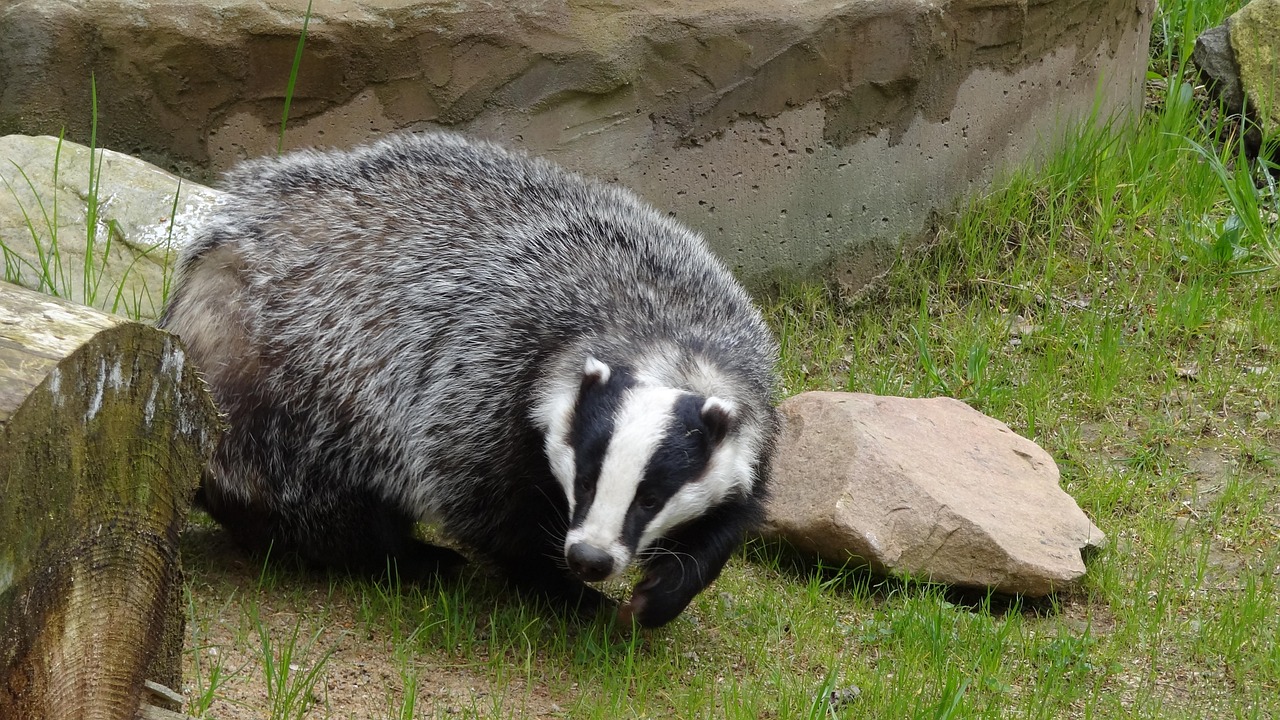European badger (Grävling)

Characteristics:
The European badger is a sturdy, medium-sized member of the weasel family, with a stocky body, short legs, and a small tail. Body length 60–90 cm, tail 12–20 cm, and weight 7–17 kg — sometimes up to 20 kg in autumn. The fur is grey with a black underside, and the head is white with two black stripes running from the nose over the eyes to the neck. The badger moves heavily but is strong and persistent.
Habitat:
Badgers are found in almost all of Sweden, except in the far northern mountain regions. They prefer mixed or deciduous forests, farmland, meadows, and forest edges, often in hilly areas with sandy soil where they can dig their setts (dens).
Behaviour:
Badgers are mostly nocturnal and live in family groups sharing a large sett with multiple entrances and tunnels. These burrow systems can be several metres deep and are often used for many generations.
They are shy and peaceful animals but can defend themselves fiercely if threatened. During winter (November–March), badgers enter a state of torpor — not true hibernation, but a period of reduced activity.
Diet:
The badger is omnivorous, but mainly eats earthworms, insects, roots, berries, fruits, and occasionally small rodents, bird eggs, and carrion. Its excellent sense of smell helps it locate food underground.
Reproduction:
Mating occurs during summer (June–August), but the badger has delayed implantation (diapause). The young are born in February–March, usually 2–6 cubs per litter, in a soft, grass-lined nesting chamber deep in the sett. They stay with their mother until late summer.
Tracks and signs:
- Tracks: Five toes with clear claw marks — especially on the front paws. Print width about 5–6 cm.
- Droppings (scat): Found in small latrines near the sett; dark brown or black, sometimes containing berries.
- Setts: Several entrances with well-worn paths; often large and old structures.
- Marking: Badgers use small pits filled with droppings for scent marking.
Distribution:
The European badger is widespread across Europe and parts of Asia. In Sweden, it is common in the southern and central regions and has a stable population. The species is game (hunted).
Hunting:
Hunting usually takes place in autumn and early winter (August–October). Common methods include:
- Den hunting using trained terrier dogs
- Baiting (ambush hunting) at night
The badger is hunted for population control and fur.
Firearm class (Sweden):
Hunting badger is allowed with class 1-3 rifles or shotguns (common pellet size no. 3–5).
Think for the hunting exam:
- Recognised by white head with black stripes.
- Active mainly at night, lives in large burrows (setts).
- Eats mainly earthworms and berries.
- Has delayed implantation (diapause).
- Enters torpor in winter.
- Hunted with class 1-3 rifle or shotgun.
